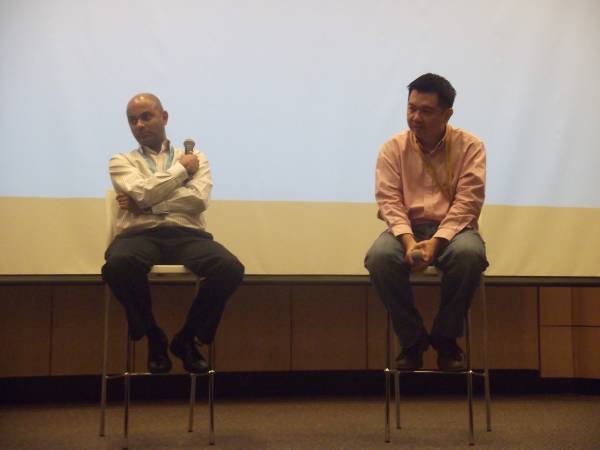This article is more than 1 year old
Intel’s Asia pivot: How Chipzilla beat Obama by decades
El Reg takes a look inside chip giant’s biggest offshore plant
When the rockstar engineers had their Haswell moment
The Reg also had a chance to chat with one of Chipzilla's self-styled “rockstar engineers”, structural design engineer Suresh Kumar Dass. Around half way through the Haswell design cycle, Intel made the all-important decision to go after the tablet market, effectively meaning teams on the front line suddenly had to find a 20x power reduction, he said.
“The difficult part is in overcoming my own scepticism over whether it can be done,” said Dass, who manages a team of about 50, working out which parts go where on the die. “First I have to look at the problem and all the pieces that need to come together and then convince myself there’s a line of sight. Then it’s a case of going to the engineers and giving them a rough plan and often the magic happens after that when they tell us all the little steps that need to happen.” 
He said many of the engineers on his team had seen the way the market was going so had an inkling of what was coming before the official orders were finally sent down from on high. “Most of the time they challenge us and tell management what needs to be done so….they were pretty excited,” he said. “Engineers want to outdo each other. Once someone has sparked something off it’s your job as a leader to gather all of the inputs and then say what needs to happen next.”
Malaysia moving up the value chain
There’s another reason why Intel has been able to establish such a large footprint in Asia: the Malaysian government. Back in 1972 the area around Penang was apparently all rice paddies, as the pic below shows. Today if you take the road from the airport to the former British outpost of Georgetown today, you’ll spot the largest concentration of electronics firms in Malaysia. AMD, Seagate, Western Digital, Renesas and other, less well known names all jostle for space in this hi-tech industrial enclave.
Intel's initial decision to come may have been based around cost, but the local government has done much since to push Malaysia and Penang up the IT value chain, according to CEO of the Malaysian Investment Development Authority (MIDA), Datul Nordin.
“Our biggest challenge is to stay ahead of the curve,” he told The Reg. “Our advantages are our strong ecosystem, a workforce exposed to the hi-tech industry, a government that knows what’s needed to support the industry and strong IPR protection. We have our own special dedicated IP Courts.” One of the key players in helping elevate Malaysia from its rivals is CREST (Collaborative Research in Engineering, Science and technology Centre).

Formed in 2011 on the initiative of large local ICT players including Intel, AMD and Motorola, its mission is to foster greater collaboration between government, academia, local businesses and its multinational members to improve IP output, R&D and talented grads to benefit the country. CEO Jaffri Ibrahim told The Reg that aside from Malaysia there’s only really Taiwan which has a 40-odd year legacy as a technology hub in Southeast Asia.
“We both took different approaches; one took manufacturing and one heavily invested in R&D,” he added.
“While Malaysia was successful in taking a manufacturing approach we want to take a step back now and also create new value from IP creation and R&D. Multinational corporations suck talent away anyway so rather than be afraid of that, our strategy should be to keep creating the talent. Hopefully we can even create the next ‘Samsung’ of Malaysia.”
Bold words indeed, but with the likes of China breathing down its neck Malaysia may need the help of several more Intel-style samurai to defend its position as a pre-eminent Asian offshore destination. ®
